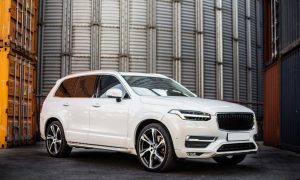Becoming a successful car dealer isn’t about luck—it’s about discipline, preparation, and strategy. The auto market is competitive, but it’s also one of the most rewarding industries to be in if you approach it the right way. The difference between dealers who thrive and those who barely survive often comes down to execution.
Think of the most successful dealerships you know—whether it’s CarMax, Lithia Motors, or a local independent dealer that dominates their region. They all started with a blueprint. They didn’t just wake up one morning and decide to sell cars; they built an operation with clear systems.
This article will walk you through that blueprint step by step. From understanding regulations to building your brand, from managing inventory to creating remarkable customer experiences, you’ll see precisely how to get started in a way that sets you apart.
Before you can sell your first car, you need to get your paperwork right. Every state requires auto dealers to obtain a dealer’s license, and skipping this step will result in your business being shut down before you start. The rules may vary depending on whether you’re selling new or used cars, but compliance is non-negotiable.
You’ll also need a physical location that complies with zoning laws. A dealership isn’t something you can run out of your driveway, no matter how entrepreneurial you feel. Some states even require proof of a display lot, a permanent office, and signage before granting a license.
Then there’s insurance. Liability insurance protects your business, your employees, and your customers. Without it, you risk lawsuits that can bankrupt you in one blow. The Federal Trade Commission also has strict guidelines on disclosures, advertising, and financing practices. Ignore them, and you could face fines that wipe out your profits.
It may seem overwhelming, but consider this your foundation. Just like you wouldn’t build a house without a strong base, you can’t make a dealership without these protections.
Building Your Dealership

Once the paperwork is complete, it’s time to think about your setup. Location matters more than most people think. A study by Cox Automotive found that 70% of buyers still prefer to visit a dealership in person before making a purchase. That means foot traffic, accessibility, and visibility can make or break your business.
The layout of your dealership also influences sales. Customers should feel comfortable browsing. Cluttered lots and dimly lit showrooms don’t inspire confidence. Clean lines, professional signage, and a precise flow from the lot to the office convey a message of trust.
Think about culture, too. Many dealers focus on the cars but forget about the people selling them. A dealership with a positive culture, where sales reps feel supported, will consistently outperform one where employees are burned out and disengaged. If you want to win, start by creating a workplace that people love to work in.
Mastering Inventory
Inventory is the heartbeat of your dealership—too much of the wrong stock ties up capital. Too little means you’ll miss out on sales. The sweet spot comes from strategy, not chance.
Defining Your Inventory Strategy
The first decision you’ll make is what kind of dealership you want to be. Will you specialize in new cars, used cars, or a hybrid of both? Will you focus on economy vehicles for high volume sales or higher-end models for greater margins?
Look at your market data. If you’re in a college town, the demand for affordable used cars may be exceptionally high. In contrast, a wealthy suburb may have more appetite for luxury SUVs. Dealers who ignore these local insights often end up with vehicles that sit on the lot for months, draining their cash flow.
Efficient Vehicle Sourcing Methods
Sourcing is where your creativity pays off. You can buy from auctions, trade-ins, wholesalers, or directly from manufacturers. Each comes with pros and cons. Auctions may offer variety, but the competition is fierce. Trade-ins build loyalty and keep inventory flowing. Direct manufacturer relationships offer more substantial margins but require larger commitments.
Many independent dealers swear by building local relationships. For example, some work with local rental agencies to purchase cars they’re cycling out. Others partner with small fleets. The key is consistency—you need a pipeline of vehicles that matches your strategy.
Strategic Inventory Management and Pricing
Pricing is where psychology meets math. You can’t just set random numbers and expect them to stick. Smart dealers utilize tools like vAuto or DealerSocket to track market pricing in real-time. These platforms inform you about what competitors are charging and how quickly similar vehicles are selling.
But technology alone won’t close deals. Think about promotions. Offering financing options, extended warranties, or creative trade-in packages can help you attract customers even if your sticker price is similar to that of your competitors. Successful dealerships mix sharp pricing with irresistible offers.
Driving Sales and Cultivating Exceptional Customer Experiences
At the end of the day, people don’t buy cars from dealerships—they buy cars from people. Your sales process will either build lifelong customers or push them toward competitors.
Understanding the Modern Car Buying Process
Today, car buyers are better informed than ever before. Research by Autotrader shows that the average buyer spends 59% of their time researching online before visiting a dealership. By the time they walk in, they’ve likely compared prices, read reviews, and even watched YouTube walk-throughs of the cars they want.
That means your salespeople aren’t just selling cars—they’re selling trust. Transparency, honesty, and patience go a long way. Pushy tactics that may have worked in the 1990s no longer suffice. Customers expect a consultative experience, not a high-pressure pitch.
Marketing Your Dealership in the Digital Age
You can’t ignore digital marketing. Websites, SEO, and social media are key drivers of leads in today’s market. A dealership without a strong online presence is invisible.
Invest in high-quality photos and videos of your inventory. Write descriptions that speak to what buyers care about—safety, reliability, performance, and financing options. Optimize your website to load quickly on mobile, as that’s where most people are shopping.
Don’t forget social proof—reviews on Google and Yelp matter. Responding to negative feedback with professionalism shows potential customers that you care. Successful dealers often run Facebook and Instagram ads targeted at local buyers, and they back it up with remarketing campaigns to stay top of mind.
Sustaining Success and Adapting to Future Trends

The auto industry is changing fast. Electric vehicles are on the rise, subscription models are being tested, and online-only dealerships like Carvana are reshaping expectations. To stay relevant, you must adapt to change.
Consider adding EVs or hybrids to your inventory as adoption grows. Train your staff to understand the differences between traditional combustion vehicles and electric vehicles, as customers will likely have questions. Keep an eye on new financing models, such as flexible ownership programs.
The most successful dealers are not those who resist change, but those who anticipate it. Just as Blockbuster missed the shift to streaming, many traditional dealers risk being left behind if they fail to adapt and evolve. Stay curious, keep testing new ideas, and listen closely to customer feedback.
Conclusion
Starting as a successful car dealer isn’t about cutting corners. It’s about laying the groundwork with compliance, building a strong culture, managing inventory smartly, and creating experiences that customers rave about. The industry is evolving quickly, but there’s room for anyone willing to put in the work.
Ask yourself: are you building a dealership that customers trust, employees respect, and competitors envy? If the answer isn’t “yes,” it’s time to adjust your strategy. Success doesn’t come overnight, but with the proper foundation, it absolutely comes.
FAQs
Costs vary, but expect anywhere from $50,000 to $150,000 for licenses, location, insurance, and startup inventory.
Yes, most states require a dealer’s license even for selling used vehicles.
Luxury and specialty dealerships often see higher margins, but volume-focused used car dealerships can generate steady profits.
Offer personalized service, build trust locally, and utilize digital marketing to differentiate yourself.
Dealerships will increasingly integrate online sales, electric vehicles, and new financing models into their business strategies.




